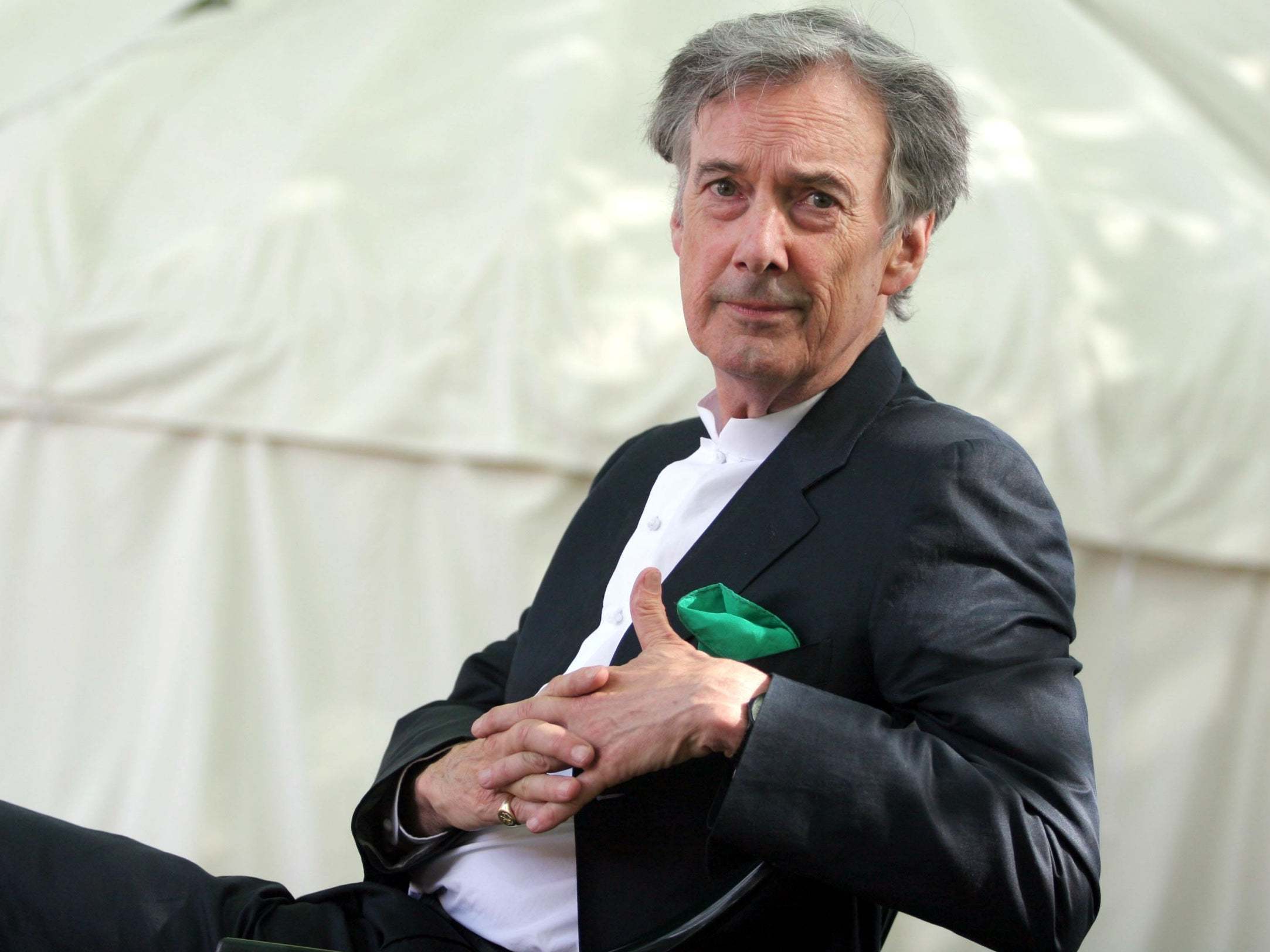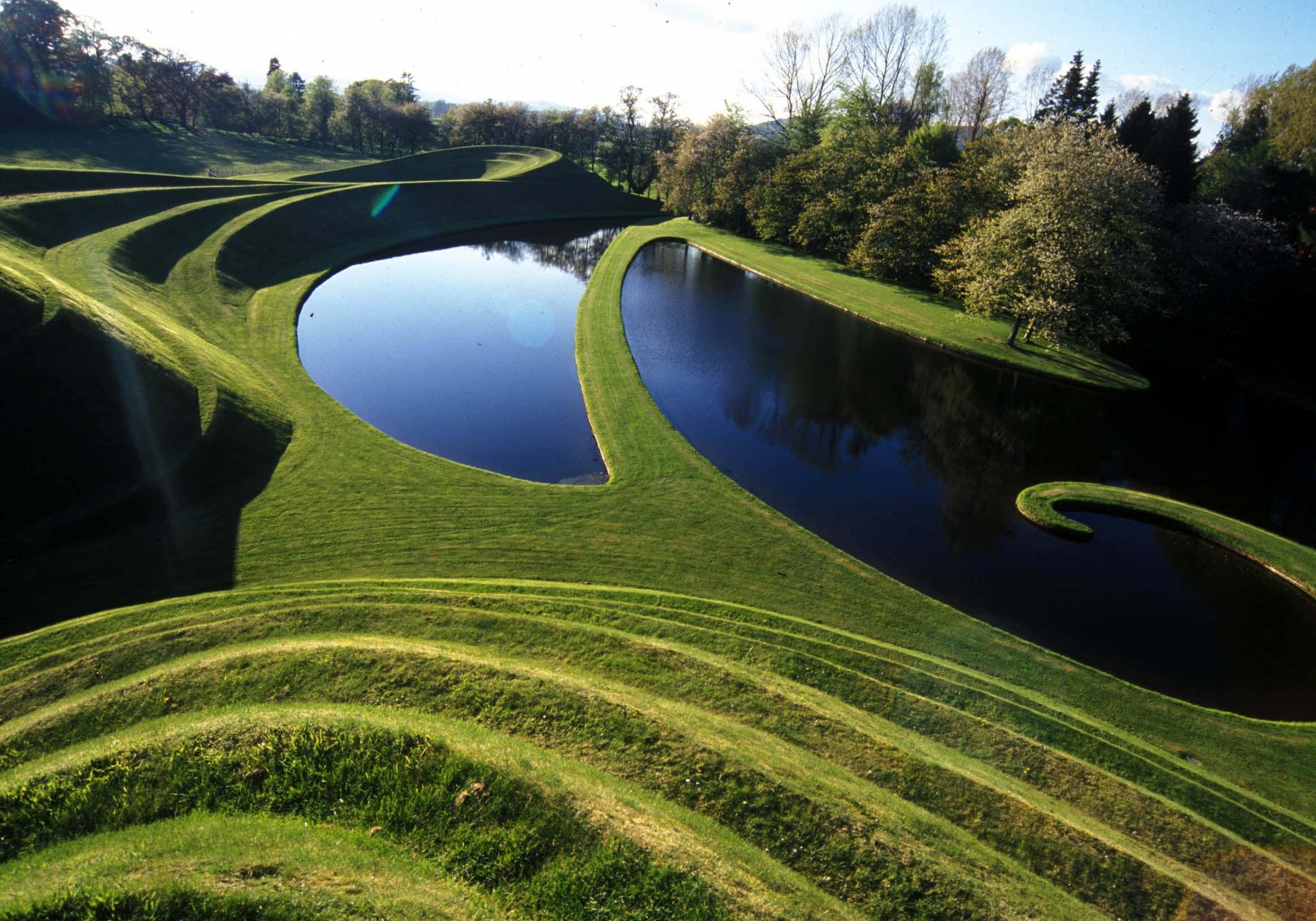Charles Jencks: Architectural historian and cultural theorist who helped to define postmodernism
Lauded for his garden designs, he was also a driving force behind Maggie’s cancer care centres

“Can’t you see? We are in a dialogue with the universe,” Charles Jencks, the cultural theorist and landform architect, told the critic Tim Richardson, who was one of the first visitors to Jencks’s Garden of Cosmic Speculation near Dumfries.
An architectural historian of great renown, Jencks, who has died aged 80, defined postmodernism with his seminal text The Language of Post-Modern Architecture, but outside the architectural world perhaps his biggest legacy came in the form of his understanding of the relationship between the built environment, nature and wellbeing as represented in his land designs and in his work as co-founder and director of the Maggie’s cancer care centres.
Charles Alexander Jencks was born in Baltimore, Maryland, to composer Gardner Platt Jencks and Ruth DeWitt Pearl. His family could trace its roots back to the Mayflower. In 1961, Jencks graduated from Harvard with a BA in English literature but he’d already fallen in love with architecture. He remained at Harvard to take his MA in the subject at the university’s Graduate School of Design. Shortly afterwards, he moved to the UK to take a PhD in architectural history at University College, London. There, Jencks wrote the thesis that became the basis for Modern Movements In Architecture, his first book.
Jencks followed this up with The Language of Post-Modern Architecture, published in 1977 and soon a bestseller. In the book, Jencks categorised the architectural styles that had followed modernism and expounded upon his theory that postmodern architecture embraces nature and the human form and spirit.
Around the same time, he built a studio called the Garagia Rotunda in the woods in Cape Cod, Massachusetts. Constructed using prefabricated materials and based around the frame of a garage, it cost only $5,000 (£3,800). Forty years later, the Garagia Rotunda would be recreated for a postmodernist exhibition at the V&A in London.
Jencks married Pamela Balding while at Harvard. They had two sons. He married his second wife, Maggie Keswick, an expert in Chinese gardens, in 1978. They had a son and a daughter.
It was Maggie who encouraged Jencks to explore landscape architecture. Together they designed their London home, Thematic House, considered the embodiment of Jencks’s postmodernist manifesto. With Maggie’s encouragement, Jencks also began work on the Garden of Cosmic Speculation, at Portrack House, their Scottish home in Dumfriesshire. The 30-acre sculpture garden comprised 20 smaller gardens with themes drawn from contemporary science. With names such as Fractal Terrace and Comet Bridge, they were built around a series of lakes and causeways designed by Maggie. The garden’s creation, which took place over 15 years, mirrored the rapid evolution of the science of cosmology itself. Jencks said of the work: “What is a garden if not a miniaturisation and celebration of the place we are in the universe?”

Scotland was host to a number of Jencks’s works. In collaboration with Terry Farrell and Duncan Whatmore, he designed the landform at the Scottish National Gallery of Modern Art. Jupiter Artland, in the grounds of Bonnington House near Edinburgh, is home to Jencks’s Cells of Life, a series of eight landforms and four lakes based on the life cycle of a cell. In 2010, Jencks began another ambitious Scottish project, Crawick Multiverse, on the site of a former open-cast mine near Sanquhar. For Crawick Multiverse, Jencks used more than 2,000 boulders, in the style of megalithic monuments, to represent the Milky Way.
Jencks took his cosmic landform principles to India, Italy, New York and South Korea. His work formed part of the Olympic Park in Beijing. At another opencast mine near Newcastle he created Northumberlandia, otherwise known as the Lady of the North – or, less flatteringly, Slag Alice in reference to her mining past – a reclining odalisque, said to be the largest human figure on earth, with 34m-high breasts. Upon the occasion of the garden’s opening, Jencks said: “They were worried about it being a pagan love god that would inspire the locals to make love on her.”
Jencks also built DNA sculptures for Kew Gardens and Cambridge and, together with his daughter, Lily, herself an architect and landscape designer, he created a landform design for Cern’s headquarters near Geneva.
Over the course of his career, Jencks published some 30 books. His most famous work, The Language of Post-Modern Architecture, was revised and reissued seven times, as the pantheon of postmodernism continued to expand. In The Iconic Building, he examined, in sometimes scathing terms, the cult of the celebrity architect, referencing such buildings as the Gherkin. In 2011, he published The Story of Post-Modernism, a review of the five decades of postmodernism he had covered during his career. During that time, postmodernism had become unfashionable but was experiencing a renaissance as a younger generation embraced its ideas.
Jencks also had a talent for bringing architects together for the greater good. After his wife Maggie died of cancer in 1995, Jencks threw himself into Maggie’s cancer care centres, the programme they had created together when she was diagnosed. The centres, of which there are now 26 – including in Barcelona, Hong Kong and Tokyo – combine the best in architecture, landscape and art to provide beautiful havens, where cancer patients can access social and psychological support. Jencks was able to summon the backing of various important architects, including Norman Foster, Frank Gehry and Zaha Hadid, perhaps reminding them of his view: “Architecture is a utopian profession, rather like the medical profession – it’s to make things better in the future.”
Jencks was still working shortly before his death, overseeing improvements to the garden at Maggie’s Inverness. His London home, which has been grade-I listed, will become a museum of his archive, to be known as Cosmic House.
Jencks is survived by his third wife, Louisa Lane Fox, and his four children.
Charles Jencks, cultural theorist and landform architect, born 21 June 1939, died 13 October 2019
Join our commenting forum
Join thought-provoking conversations, follow other Independent readers and see their replies
Comments
Bookmark popover
Removed from bookmarks